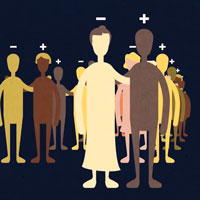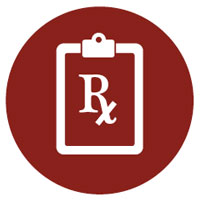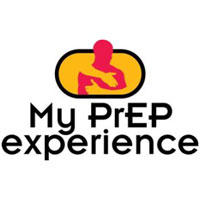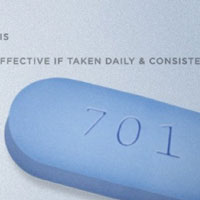Lisa Diane White, MPH is the Deputy Director at SisterLove, Incorporated. She has over 25 years of experience in Black Women’s Health issues and other health education programs and services. Lisa Diane is an accomplished and recognized speaker, facilitator, trainer and consultant, who expertly intersects many social justice issues, including feminism, women’s and LGBTQ health and rights, reproductive justice, lesbian intimate partner violence, substance abuse, HIV/AIDS, intergenerational relationships, aging and human rights.
I came to the 2015 United States Conference on AIDS (USCA) to learn, and I was not disappointed. Dr. Anthony Fauci, Director of the National Institute of Allergy and Infectious Diseases (NIAID) provided the audience with a historical timeline about HIV/AIDS during the opening plenary luncheon and I was taken back to my own historical timeline.
Twenty-five years ago I facilitated my first group of women who were HIV positive. I was asked to conduct a self-help group with a newly formed support group for women diagnosed with AIDS. I knew self-help, I knew grief, I knew healing and I knew how to help women access their grief and trauma to heal. I didn’t know anything about HIV. How could I help these women? What did they need from me? I eventually learned. They needed to express their fears about living and dying with HIV/AIDS. They were worried about their children and families. They needed to be held. They needed to cry. They needed my support. I was afraid. I didn’t know how HIV was transmitted. Would I get HIV from their tears? One woman leaned on me while we were talking and began to cry. She soaked my shoulder with her tears. I encouraged her to release her grief and held her while she sobbed on my shoulder? I kept rubbing my shoulder. Did I have a cut I was unaware of? I hurried home and showered after the group. I worried for months about that encounter. I finally got an HIV test. I was sick with worry and fear as I waited for my results. Two weeks later I got my results. I was negative. I vowed never to work with HIV positive women again.
Fast forward to USCA 2015. I attended a session on HIV and trauma. The panelist stressed the importance of recognizing trauma and its impact on clients when accessing and staying in treatment and care. Stigma plays a big part in traumatizing HIV positive women. Sometimes the source of trauma starts with the first medical visit. Many HIV positive women suffer from Post-Traumatic Stress Disorder (PTSD). One panelist reminded us that some trauma was ongoing. There is no post trauma for some. It is all current. That is true about stigma and racism. Its damaging repercussions are ongoing. After the session I engaged in conversation with a woman who shared with me she was HIV positive. We sat down to eat our lunch and she continued to share with me about living with HIV. When she disclosed to a family member they covered their face and mouth with their shirt. Really? In 2015? She began to cry as she shared many of the indignities she faced when disclosing to family and friends her HIV positive status. They all asked her to keep that information in the family and not to share any further. I stood up and took her into my arms. She cried and cried and soaked my shirt with her tears. I enfolded her more deeply into my arms in a full body hug and she began to sob. Her words were muffled in my tight embrace. She hadn’t been held in a while. I could feel the wetness from her tears on my skin. I had a flashback to the moment I supported the woman living with HIV 25 years ago. I now know you cannot transmit HIV with tears. The body fluids were blood, semen, vaginal fluids and breast milk. Not tears. Not saliva. Not by breathing. You cannot get HIV just by sitting next to someone with HIV. I could not get it no matter how closely I held the beautiful woman. She couldn’t cry enough tears to transmit HIV to me. No matter how deep her grief.
I was outraged that she was harmed again by disclosing her status. I was outraged that her family shunned her and covered their faces. But then I remembered. I know a great deal about HIV. I have worked in the field for 12 years. I have learned a great deal. I had forgotten my vow never to work with HIV positive women. I am glad. I live and work with clients living with HIV everyday single day. I LOVE my life’s work. Knowledge about HIV prevention, transmission and treatment (FACTS) can offset the stigma that is caused by misinformation and ignorance (MYTHS). The lack of knowledge breeds fear. The lack of knowledge breeds stigma. I am working every single day to educate the community about HIV to eliminate fear, stigma and HIV criminalization.
I held this beautiful grieving woman until her sobs subsided. She apologized for soaking my shirt with her tears. I encouraged her to seek support around living with HIV. I encouraged her to be in community with people who could hold her and help her heal from trauma inflicted after being diagnosed by HIV. I thanked her after one final hug. She asked why I was thanking her. I told her she was a gift I needed that day. What I didn’t share was the gift she offered me. The gift of the memory and the release of fear and shame about my behavior 25 years ago. I know better. Now I can do better.
 This handy short video from your pals at
This handy short video from your pals at  To get a little more in-depth, turn to
To get a little more in-depth, turn to 

